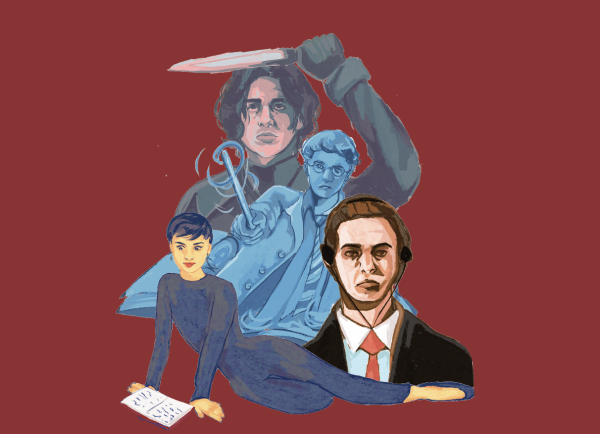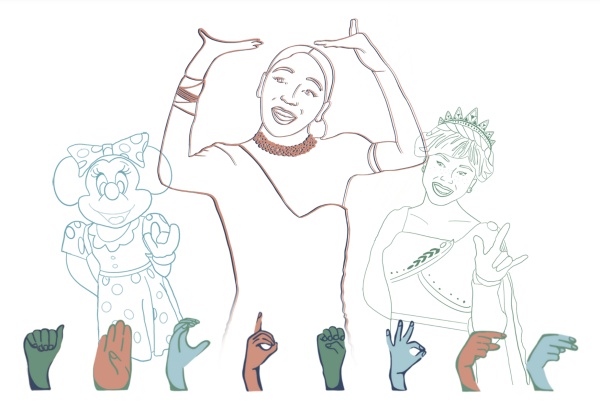A Fatal Attraction
3 MIN READMurderers, both in real life and in the movies, are omnipresent in our society. We are fascinated with those who commit horrific acts. But why can’t we look away?

Heart beating out of your chest, your body lies still, sitting on the couch in your living room. As the light from the TV flickers in the darkness, the violin melody preludes the victim’s guaranteed fate, and you find yourself wanting to block out the scene you sat down to watch. Suddenly, the shadows on the wall come to life, striking quickly and violently as the screen fades to black. Just like that, it’s over, but the next episode quickly catches your eye.
The thrill we get from watching shows like these has fascinated viewers and psychologists for generations. From a psychological perspective, intense fascination with murder and crime in humans is innate. This idea has been tested throughout history, resulting in multiple theories explaining this concept. The Freudian theory, proposed by Psychologist Sigmund Freud, states that we all are born with a natural drive toward death and destruction, providing an explanation for many individual’s interest in death and violence. One of Paly’s AP Psychology teachers, Melinda Mattes, explains why people are drawn to movies and shows with prominent themes of murder and crime: “[violence] is natural and inborn,” Mattes said. “It’s something we are constantly suppressing, so watching movies like that would be our cathartic way of dealing with it.”
In order for humans to fulfill their optimum levels of stimulation, they will often seek activities that provide that excitement. Known as the Arousal Theory, it provides another potential explanation of why people find the concept of murder so compelling. The same feeling causes many to watch movies that present unfamiliar concepts ,such as murder, as they allow viewers to explore the darker side of life in the safety of their living room.
“It’s like watching zoo animals,” Mattes said. “It’s safe when they’re in the enclosure and you know there is a boundary between you. I can watch them and it’s fascinating, but watching a tiger pace in front of me looking at me like I’m dinner is different and quite scary.”
The distance that is created between the viewer and the victims in shows such as “Criminal Minds” and “Law and Order” becomes extremely comfortable. As viewers consume episode after episode, what was once many people’s main source of entertainment, can transition into a living nightmare. The Zodiac Killer, a Bay Area-based serial killer in the 60s, created a nightmare of this magnitude. The Zodiac, who by the end of his career took credit for over 37 murders, became infamous for his impeccable, emotionless violence. The Zodiac’s murders were especially chilling due to the strategy and attention to detail that he executed with each victim. He showed extreme organization and confidence as he would commonly leave coded puzzles for police to solve and follow. Brian Ganz, a current Palo Alto resident, was a young boy growing up in San Jose during this time. “I just remember there being sheer panic in the news, in schools and in my parents,” Ganz said.
The Zodiac Killer’s crimes grabbed the attention of the public, appearing on the forefront of news broadcasts and newspapers across the country. He created the same kind of puzzles in murder movies and series, but the reality of his crimes and threats clearly elicited more fear than any movie could ever generate.
With these dark themes on tap, Netflix offers hundreds of movies and shows that many of its 130 Million subscribers are eager to stream. The most recent and popular documentary series is Conversations With a Killer: The Ted Bundy Tapes, which explores the mystery behind notorious serial killer Ted Bundy, who was active during the 1970s. After being released in January 2018, the series about the deranged murderer has attracted immense, flooding social media accounts with praise.
“It was all over my Instagram and I saw that everyone was watching it,” said Paly student Tina Lagerblad. “It was fascinating because there was a discussion surrounding it and, after watching it, I could see the psyche of the [murderer] … something I had never heard of before.” In a way, serial killers like Ted Bundy have gained celebrity status through fanbases celebrating them—even after their deaths. “Extremely Wicked, Shockingly Evil, and Vile,” which debuted one month ago, has spread from screen to screen globally, receiving the same level of attention—if not more.
You can finally rest, and the characters will wait another week to grace your screen; it’s important to remember what draws us to the darker side of human nature, like moths to a flame. The entertainment industry has created mesmerizing movies and shows, filled with the mystery that has managed to capture millions of avid fans for so many decades, and many more to come.

Katherine joined C Magazine because she was amazed by the creative designs as well as interesting text the magazine continuously presents. She love the...

Theo's passion for music and writing is what drove him to join C Magazine. His favorite part of being on the staff is getting to meet and collaborate...







